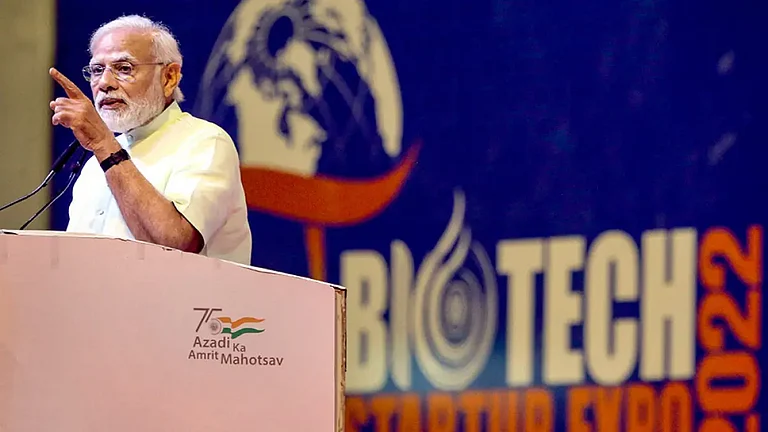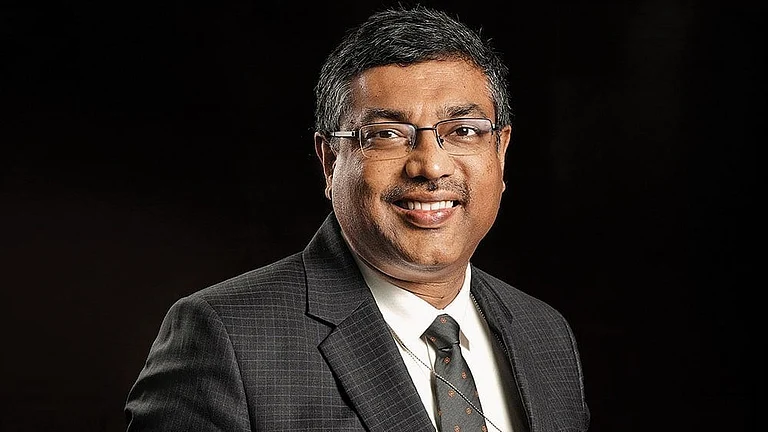What is the objective of MeitY’s start-up schemes?
Technology space is driven by innovation, and innovation usually comes from start-ups. That is why I think for us it's very important that a start-up ecosystem is encouraged so that innovation takes place. So yes, innovation is the primary objective.
India's annual spend on research and development (R&D) has remained stagnant at about 0.6% of GDP. Isn't that hampering our pace of tech innovation?
One of the core issues is the lack of risk-taking behaviour among Indian companies. Developing products involves high risks—while it offers the potential for significant profits, there is also the chance of no returns. As a result, many companies gravitate towards services, which provide steady margins and a stable business model.
The recent announcement of the Anusandhan National Research Foundation aims to provide substantial resources for research financing. Additionally, the finance ministry is working on establishing a dedicated R&D fund, announced in the last Budget.
Within MeitY, the R&D budget has seen a significant increase—from Rs 600 crore two years ago to Rs 1,148 crore this year. The focus is now on applied research. Efforts are being made to co-finance research with industry and academia.
A lot of start-ups in deep tech say they find it hard to raise funding and get customers in India. Eventually they 'flip' their companies to the US. How can we discourage this trend?
We need to focus on attracting capital. This includes creating avenues for venture capitalists and private-equity holders. We are beginning to see progress on this front, with the Indian Venture Capital Association members working toward increasing financing in this area.
It could be worth exploring the use of long-gestation funds, such as pension funds. Pension funds typically align well with projects offering steady, long-term returns, like infrastructure.
Is the government considering the development of specific key talents to help India transition into a product nation?
There is a good part of it and a not-so-good part of it. We appreciate the good part and we take note of it and do it. We also want to look at what the not-so-good part is to make sure that it is addressed—where you support Indian start-ups and innovators. For instance, in the DLI [design-linked incentive] scheme, we aim to keep the window wider, ensuring that not just start-ups and MSMEs [micro, small and medium enterprises] but any domestic company can take part.
"Within MeitY, the R&D budget has seen a significant increase—from Rs 600 crore two years ago to Rs 1,148 crore this year"
What is your evaluation of the DLI scheme? Don’t you think we should have DLIs in other technology segments to go up the value chain where the bulk of money lies?
It’s clear that India must move up the value chain in electronics manufacturing. First, we must focus on manufacturing as part of the global value chain.
Second, focusing on design is equally important, which is why the government has introduced initiatives like the DLI scheme, particularly in semiconductors. India has a good design ecosystem. We have enough human resources engaged in this area. While much of this talent is currently employed by multinationals, it’s still part of the Indian ecosystem. Over time, these professionals can transition to start-ups or Indian companies, contributing to domestic innovation.
How does the government plan to handle the artificial-intelligence (AI) revolution so that it does not disrupt the labour market?
We don't necessarily need to regulate it [AI] purely from a jobs perspective. Every technology, including AI, will inevitably replace certain jobs but also create new ones. The key is to identify where opportunities lie to create more jobs.
The most critical aspect is skilling and retraining. The focus should be on identifying niche opportunities where AI can improve productivity and the quality of services.
Should India build large language models (LLMs) or just focus on AI applications?
The AI mission includes both the development of applications and the creation of a foundational model. We are committed to building our own foundational model. Developing applications is also important.
Many industry leaders have suggested that India might be better off focusing on building applications on open-source models rather than creating an LLM. However, there are risks to this approach, mainly because we cannot guarantee that these open-source models will remain available in the future. Moreover, models trained on Western data often come with inherent biases.
Experts argue that Indian products need promotional support, similar to how China and the US support their domestic industries.
I think the government has become more proactive in terms of standards, recognising that setting the right standards is essential for supporting Indian products. India is increasingly influencing how standards are created, which is a crucial first step toward supporting Indian products and domestic innovation.
Will the government encourage the use of Indian-made chips?
We are focusing on promoting chips for specific applications where India can be competitive, such as in CCTVs [closed-circuit televisions], smart meters, RF [radio frequency]-based applications and automobiles. Chips for mobile phones and similar devices are still not produced in India. Where security is concerned, the government has introduced regulations for secure, trusted sources of chips.













